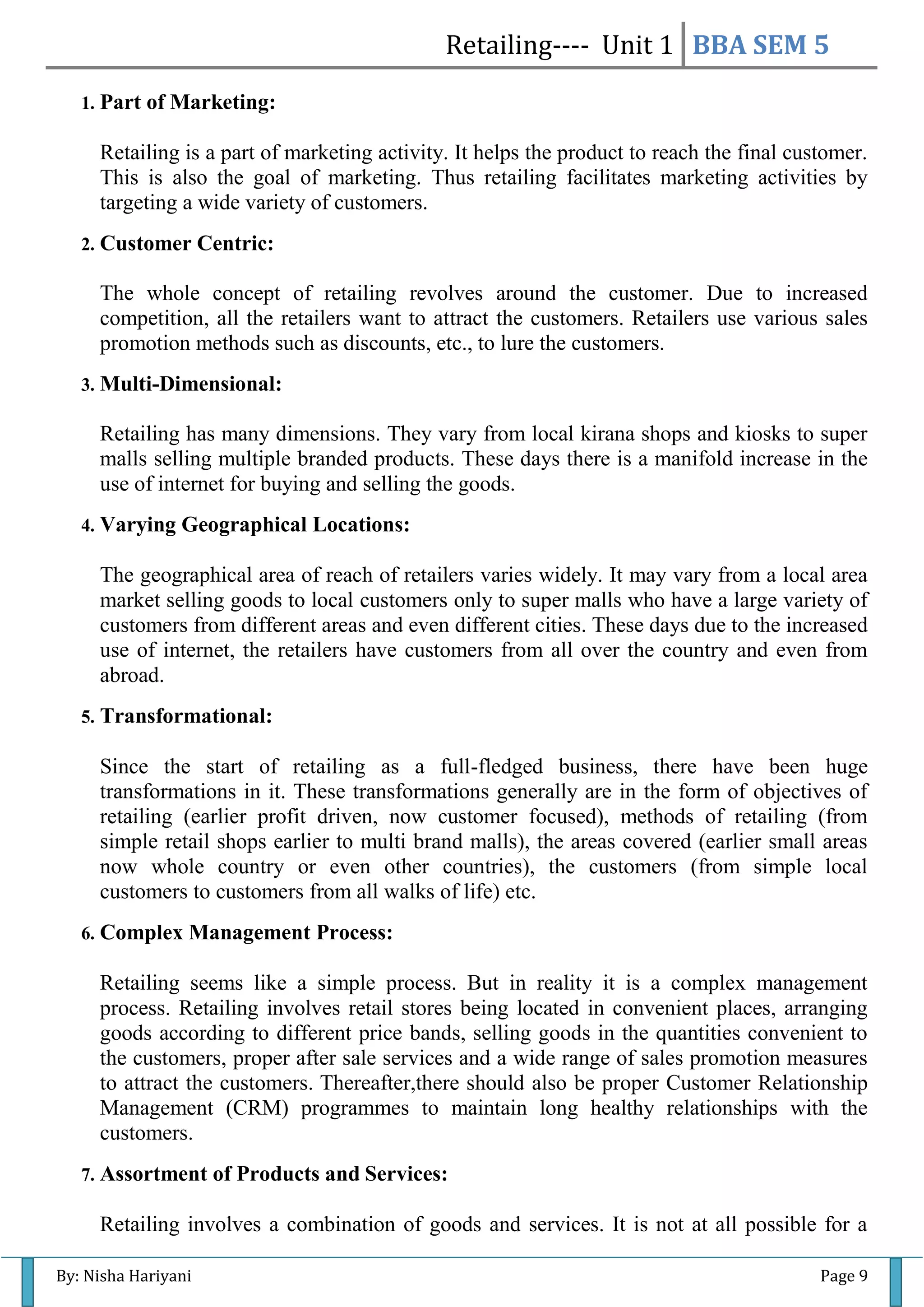1. The document discusses the meaning, functions, importance, scope, and nature of retailing. Retailing involves the sale of goods and services to the final consumer.
2. Key functions of retailing include understanding customer needs, buying and assembling products, breaking bulk, warehousing, selling, providing credit, bearing risks, grading/packing, and collecting market information.
3. Retailing provides employment, contributes to the economy, dominates the supply chain, and offers convenience to customers through product availability and location. The scope of retailing is wide and continues to grow and change with technology.



















